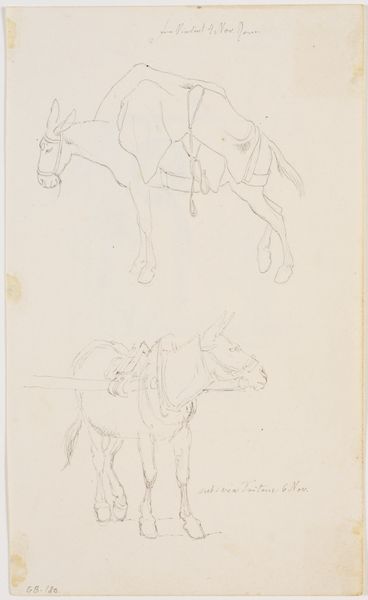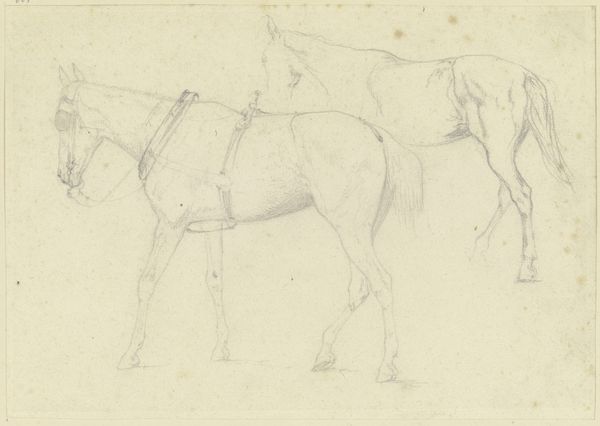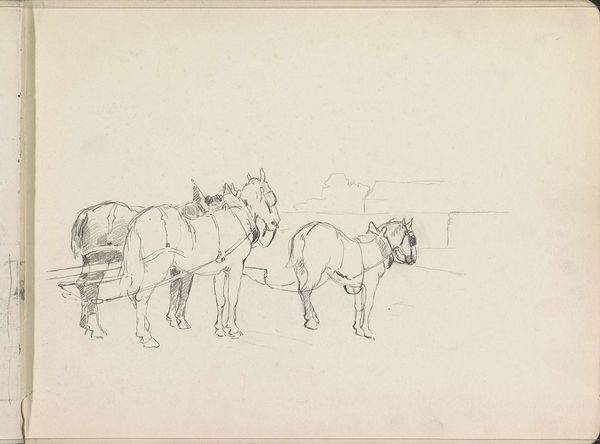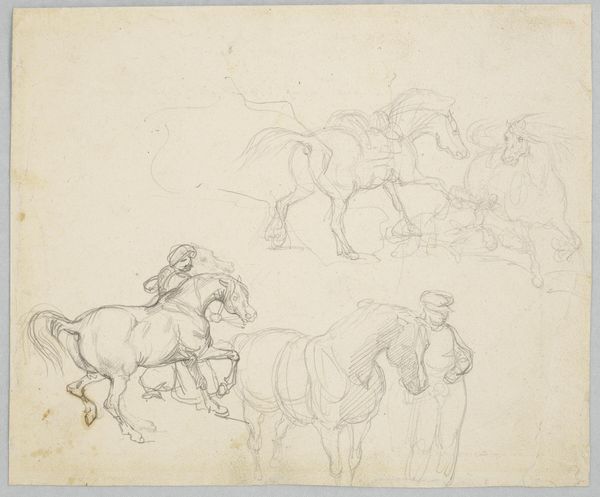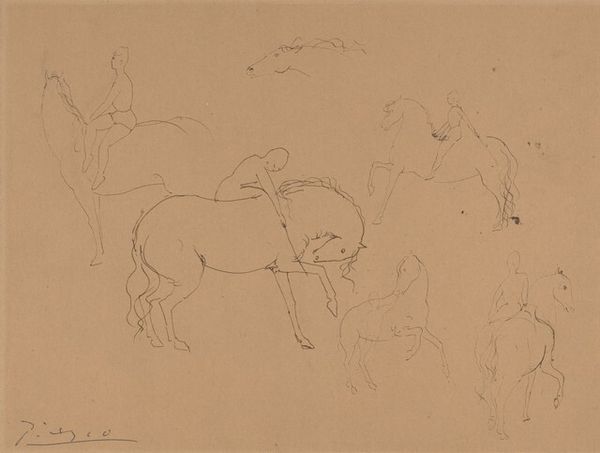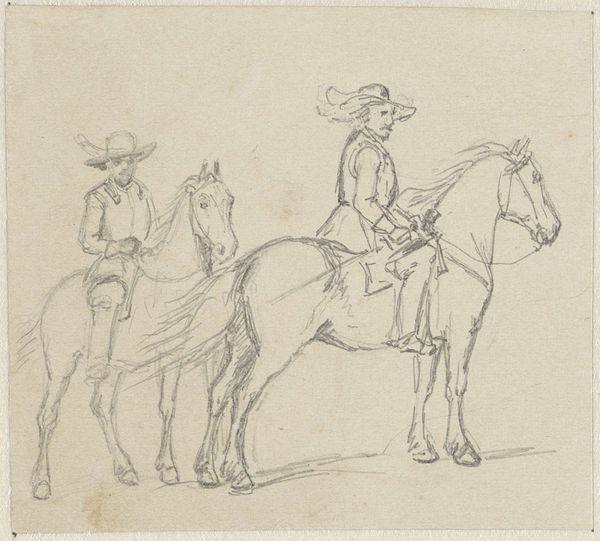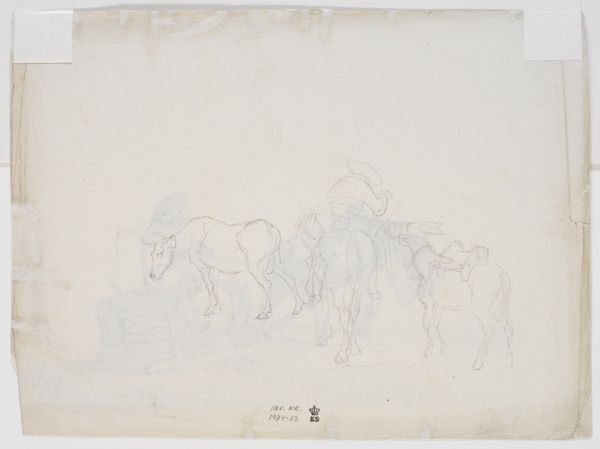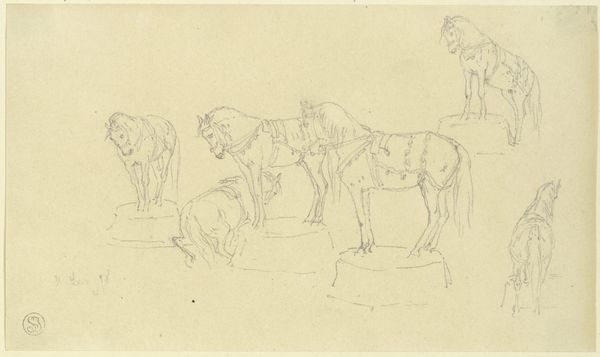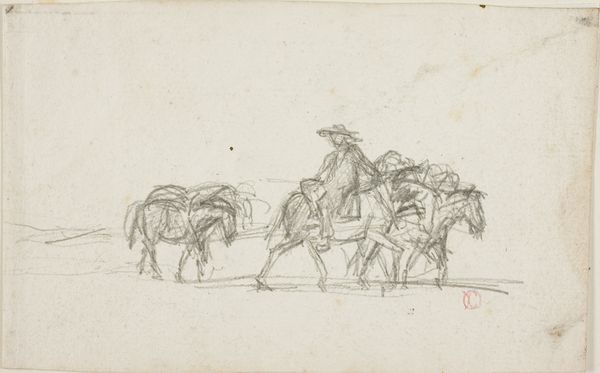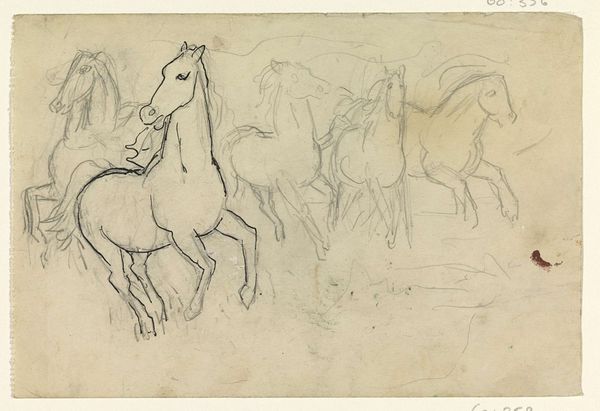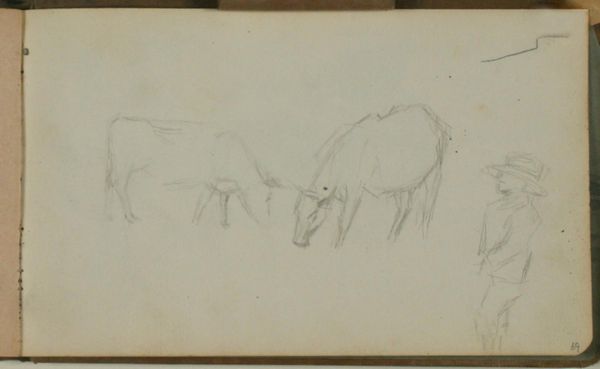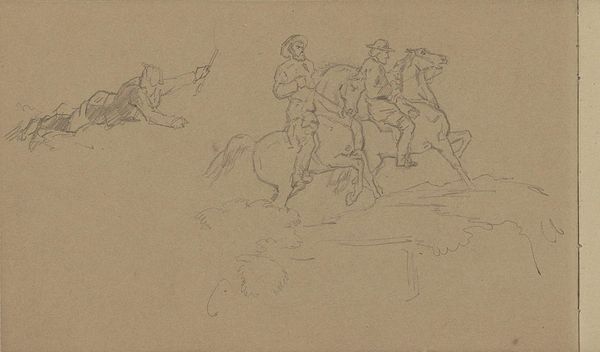
drawing, pencil
#
drawing
#
pencil sketch
#
landscape
#
pencil
#
realism
Dimensions: height 207 mm, width 284 mm
Copyright: Rijks Museum: Open Domain
Editor: We're looking at "Groep muilezels" by Auguste Raffet, created sometime between 1814 and 1860. It’s a pencil drawing, currently held at the Rijksmuseum. It’s delicate, almost like a fleeting observation. What can you tell me about this piece? Curator: This unassuming sketch offers a glimpse into 19th-century military life. Raffet, known for his lithographs of Napoleonic campaigns, likely made this preparatory drawing to capture the everyday realities of troop movements. Mules were crucial for transporting supplies. Note how Raffet focuses not on grand battle scenes, but on the labor these animals endured. It invites reflection on the social impact of military campaigns and logistics. How might its quiet realism challenge conventional war depictions? Editor: That's interesting. I hadn't considered the social commentary angle. The rough sketches lend a certain authenticity. Do you think it served a specific purpose, other than as preparation for lithographs? Curator: Absolutely. Beyond military campaigns, this type of drawing had commercial value. Increased literacy and access to print media created a market for images depicting everyday life. Raffet catered to that market by portraying "real life" scenarios. How does that relate to realism as an artistic movement? Editor: That connection to a growing consumer culture makes a lot of sense! I'm struck by how such a simple drawing can open up so many different social and artistic avenues. Curator: Precisely. It highlights the importance of looking beyond aesthetic qualities to understand an artwork's place within its broader historical and cultural contexts.
Comments
No comments
Be the first to comment and join the conversation on the ultimate creative platform.

